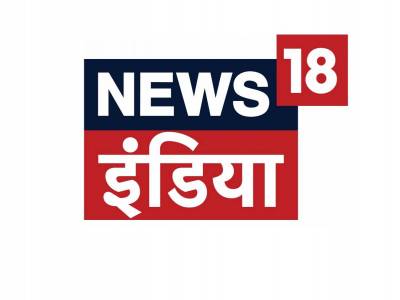Perspective | TV shows going finite, viable or no?!
As children born in the 90’s, we have been evidences to changing television industry. From family dramas to mythology and from youth centric to fantasy; Indian television has come a long way.
Not only has have the genres evolved, but production, story-telling and other peripherals of television have changed drastically. While saas – bahu sagas ruled television space for years now, crime-based shows took over weekends gradually. In the recent times, one observes that, shows have gone shorter on screen life and aim to deliver crisp and face-paced stories.
Evolving as the finite series format or short format shows, these shows are today seen as the top performing shows and liked by audiences across age groups.
While some new Hindi GEC players in the game are riding high on these formats and are also gaining eye-balls (purely for the story sometimes), many older GEC’s have tried these formats, however have been unsuccessful in creating that required and desired impact.
In this edition of Adgully Perspective, we seek to ask parties involved in the business, that while new channels are banking upon these concepts, are older channels afraid of facing competition or failure? Also how viable is this format as far as cost of producing a short-story format or finite series is concerned viz a viz the regular sagas? And lastly, how accepting are Indian audiences to these relatively newer story–telling formats?
We spoke to Manisha Sharma –EVP Programming, COLORS, Nikhil Madhok, SVP Marketing – Star Plus, Priyanka Datta – Business Head, Zindagi.
Giving a sense of how finite series work, Datta said, “Speaking closer home (Zindagi), all shows on the channel come with a definite lifeline. But in India, there is nothing as finite or non-finite. Our stories go on for years and many times change every week, depending on the ratings. However, the ‘finite’ may not be essentially 13 weeks or 26 weeks, but may go on for 6 months as well. Also, the kind of content that finite series offer is unusual for India audiences and calls for an audience which posses a different mindset – quick, open-minded and progressive”.
While new channels are banking upon these concepts, are older channels afraid of facing competition or failure? Responding to this, Sharma said, “At COLORS it has always been our endeavour to push the envelope of creativity and fuel passion whilst at work. We have channelized our efforts to address the changing audience preferences by introducing disruptive content in unique formats that have built stickiness. We have never shied away from experimenting with different and disruptive content. Sometimes they have worked and sometimes they have not. Nonetheless, that has never stopped us from reinventing ourselves and taking calculated risks. We are glad that we enjoy the reputation of providing futuristic entertainment to our esteemed viewers”.
Sharing his thoughts on the viability factor of the finite format on Indian television, Madhok said, “Well, for us at Star Plus, to be able to deliver high quality differentiated content, a lot of investments go into the talent hunt, scripting, production, post production etc, which I believe usually cannot happen if a show is running on a daily basis. The quality control is better if we pre-shoot and offer content to the viewers, after multiple checks and tests; and this is how even American television works and is thus popular here in India as well. Hence when we decided to make Everest, the script demanded that attention from us on quality and hence it is a finite series”.
Shedding light on marketing a finite series, he added further, “As far as marketing is concerned, because it is a limited series, it is important that we get to good start and that is the reason you see finite shows having large volumes of marketing gamut during the prelaunch, and further on. Hence for short-format shows or finite series, considering the smaller screen time it would, it is important that the makers and channel go all guns blazing so as to make those strong initial impressions on the viewer’s minds”.
Sharma mentions that the channel has pushed the boundaries of programming and has invested in viable content in both the fiction and non-fiction space while at the same time heavily investing in and encouraging home grown formats. “Given the duration of a finite series, budgets may vary depending on various factors. However, in order to break the status quo we take calculated risks and that has always been our aim. It is more important that we remain a profitable channel, while simultaneously also delivering good content and meeting the entertainment objectives of our ever discerning viewers who want an array of options to choose from”, she added.
Having sat on the producer’s chair, a senior producer, on condition of anonymity said, “The cost for regular shows and finite shows definitely vary but on different grounds. While regular shows demand large sets, numerous artist high production cost, finite shows, considering its smaller TV life need to bring the X factor (s) to attract audiences and that could be in the form of big celebrities, large-than-life shooting scale, high-voltage marketing spends etc. Hence, spends happen on both formats, in their own different ways”.
Running a channel on the back on finite stories from across the border is not a cake walk for channel custodians at Zindagi. Sharing her thoughts on the acceptability factors that this format brings, Datta said, “Acceptability of the newer formats is a concern for us since we are just starting out; however, considering the response to shows on Zindagi has been overwhelming, it is a learning that Indian audiences are open enough to try out new things. Speaking of the success or failure, it, like any other show is dependent on ratings. But unfortunately, the audience these formats aim to cater to are usually not the audiences that are counted in the ratings sample. For example, while Zindagi caters to SEC A and B, it focuses on educated classes, and not the masses where the people’s meters are set up, thought the geographical location may remain the same. Hence even if a finite format show is accepted and liked by audiences, it may not show up in the ratings charts. Hence, finding a correlation between the two is something we as an industry are still working on”.
The producer believed that the success of failure of a show, irrespective of the format is totally dependent on the story. "In case of finite formats, while Indian television has just ventured into it, the genres have been limited to drams, action and thriller. Other genres like comedy, romance – led stories, satire have been less explores. However I feel, if the story is built correctly, it will connect with the audience, regardless of its life on television. While Indian viewer choices are changing, it will definitely take a while for makers and broadcasters to tap into to it completely”, he said.
Sharma is of the opinion that viewers today are evolving and seek a variety of content. “India has reached a stage where the ever discerning eclectic viewers are willing to accept and adapt to change and newer genres of content just as they have been open to watching newer and different genres in films”, she concluded.
























Share
Facebook
YouTube
Tweet
Twitter
LinkedIn